
Lot 158
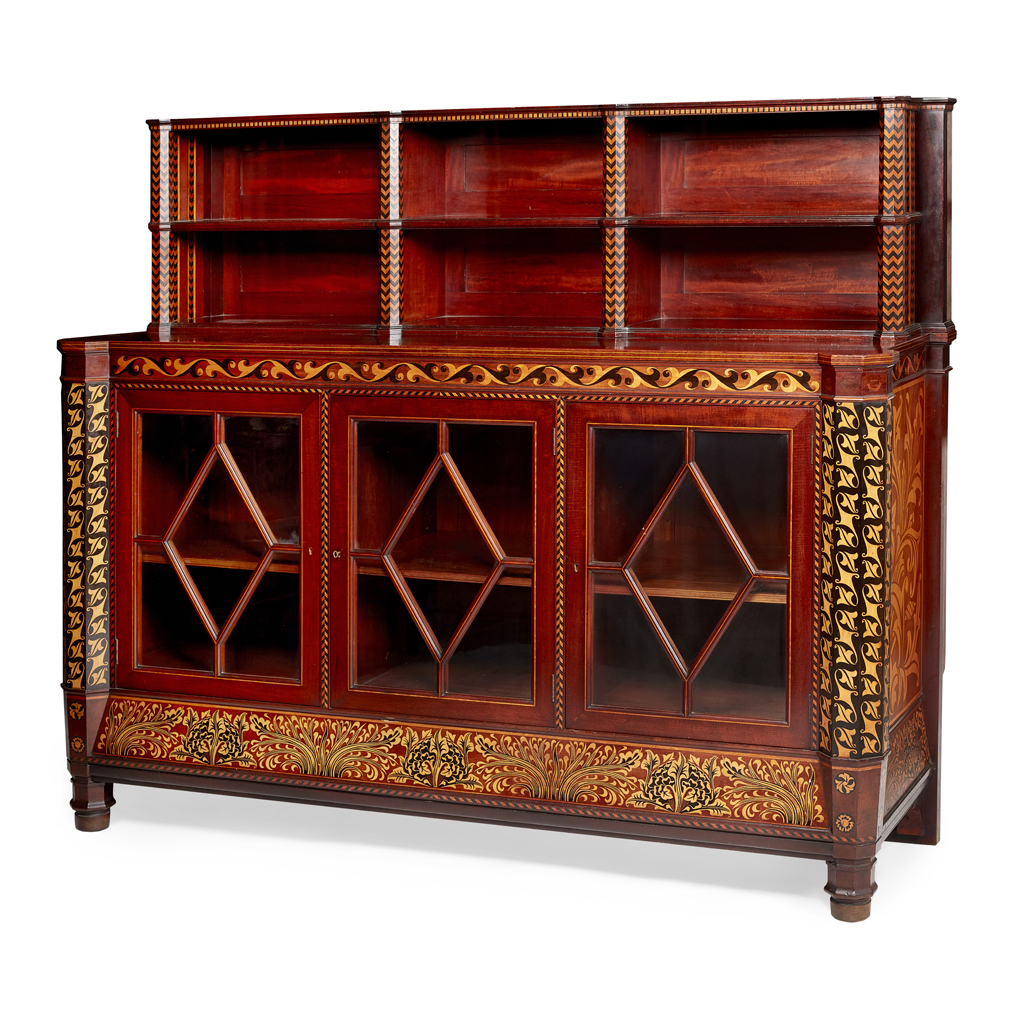
GEORGE WASHINGTON JACK (1855-1931) FOR MORRIS & CO.
ARTS & CRAFTS SATINWOOD AND EBONY INLAID MAHOGANY SIDE CABINET, CIRCA 1898
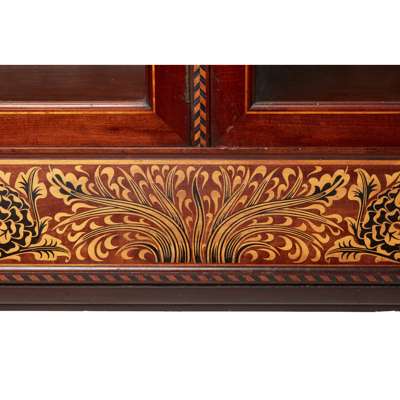

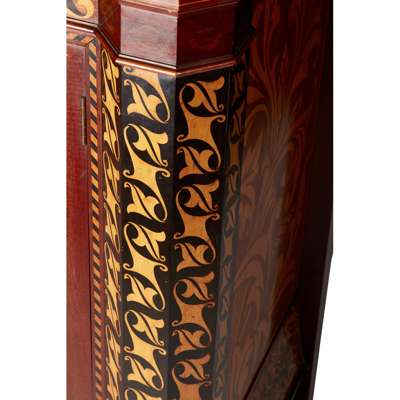
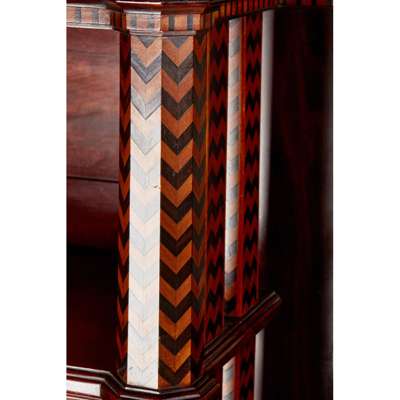
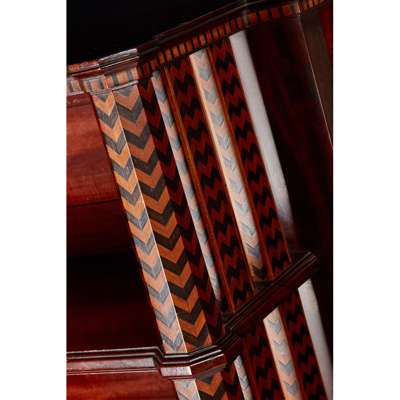
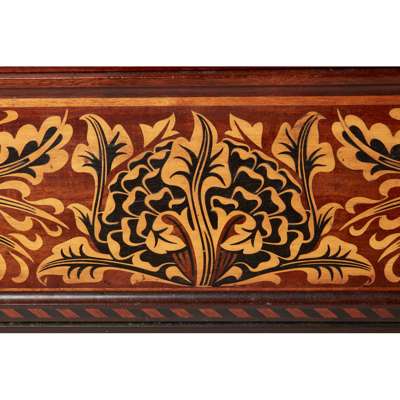


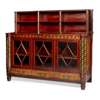
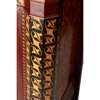
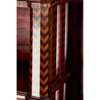
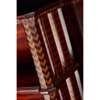

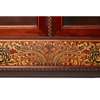
Auction: 14 February 2019 at 10:00 GMT
Description
the top with six open shelves divided by inlaid chamfered chevron columns, above three astragal glazed doors enclosing a shelved interior, profusely decorated inlaid bands and borders depicting scrolls and stylised foliage, the side panels also inlaid, raised on waisted chamfered feet, with a key
Dimensions
178.5cm wide, 152cm high, 60cm deep
Footnote
Exhibited: Madrid, Fundación Juan March and Barcelona, Museu Nacional d'Art de Catalunya 'William Morris and the Arts & Crafts Movement in Great Britain' October 2017-May 2018
Note: George Jack trained as an architect but, like many of his contemporaries, he also designed furniture and furnishings and made a range of plaster reliefs and wood-carvings. He worked for Philip Webb, a friend of the designer William Morris, and architect of Morris's own home, Red House. This connection led to Jack receiving commissions to design pieces for Morris & Company, alongside his architectural work. The companion cabinet to the current lot, also with exceptional inlaid decoration, is held at the Victoria & Albert Museum in London (museum number W.42:1 to 8-1929) which was one of several pieces of furniture made specially as stage props for the first run of 'The Crusaders' by Henry Arthur Jones at the Avenue Theatre in London in 1891. Morris & Company were credited in the programme, which also requested 'the indulgence of the audience' between acts as 'the stage is small and the scenery rather elaborate'. It seems likely that someone attending the play may have commissioned the present lot as the play acted as a promotion for the firm.
Amongst George Jack's most powerful furniture designs for Morris & Company, only six of these richly inlaid cabinets are known. Created between 1893 and 1906, they number among the most expensive pieces ever advertised by the firm. One example is in the Victoria and Albert Museum, one (probably from Jack's own collection) is now at the Philadelphia Museum of Art and a third is in the collection of the Virginia Museum of Fine Arts.













